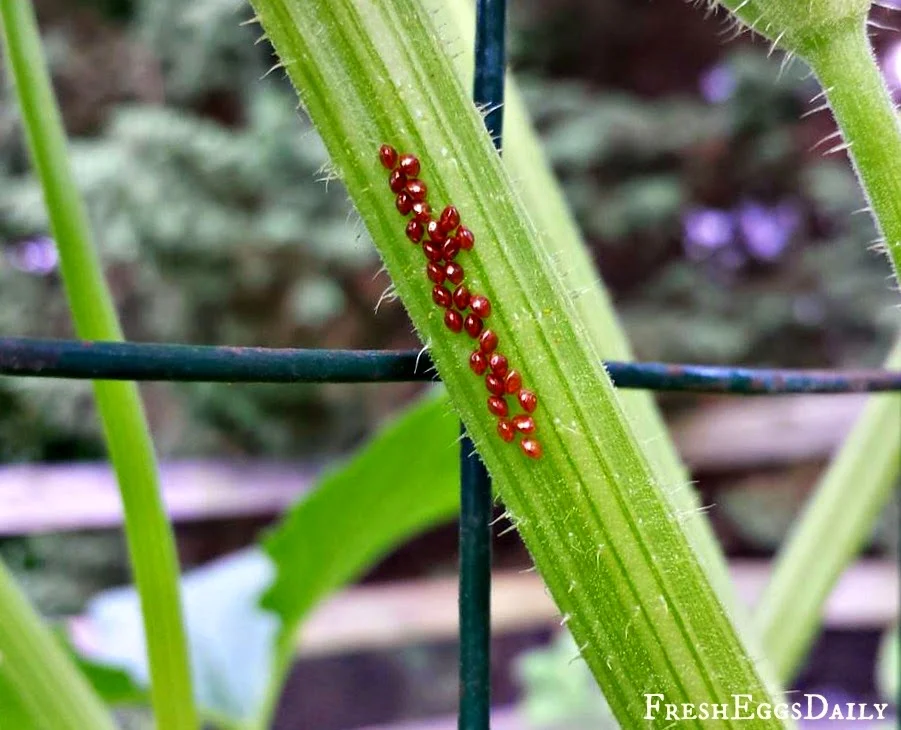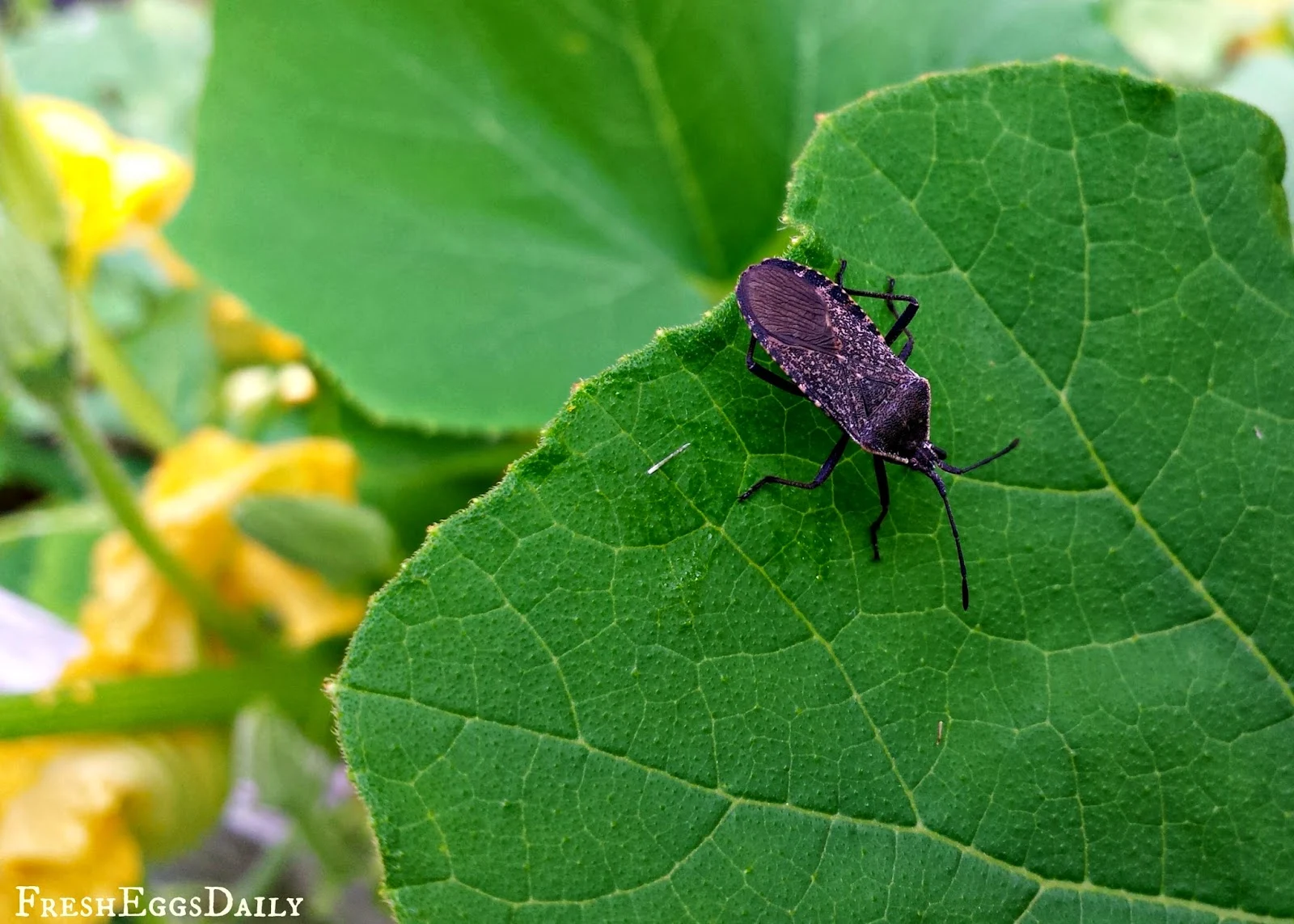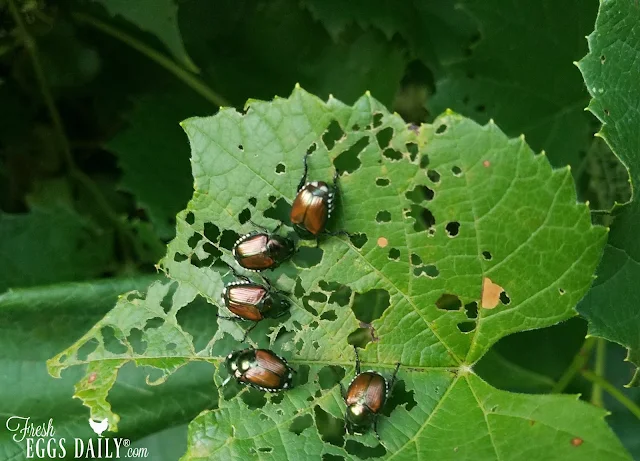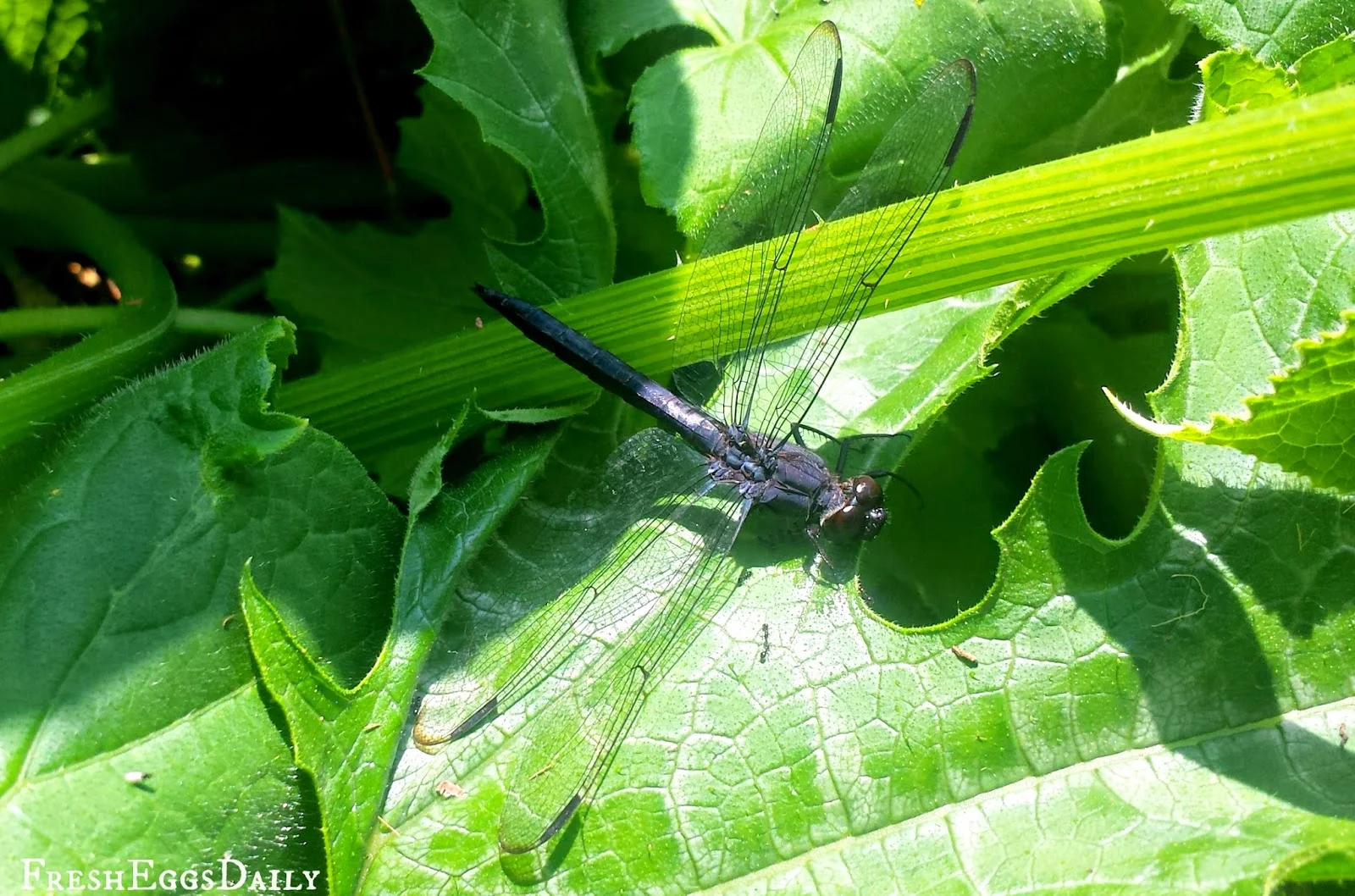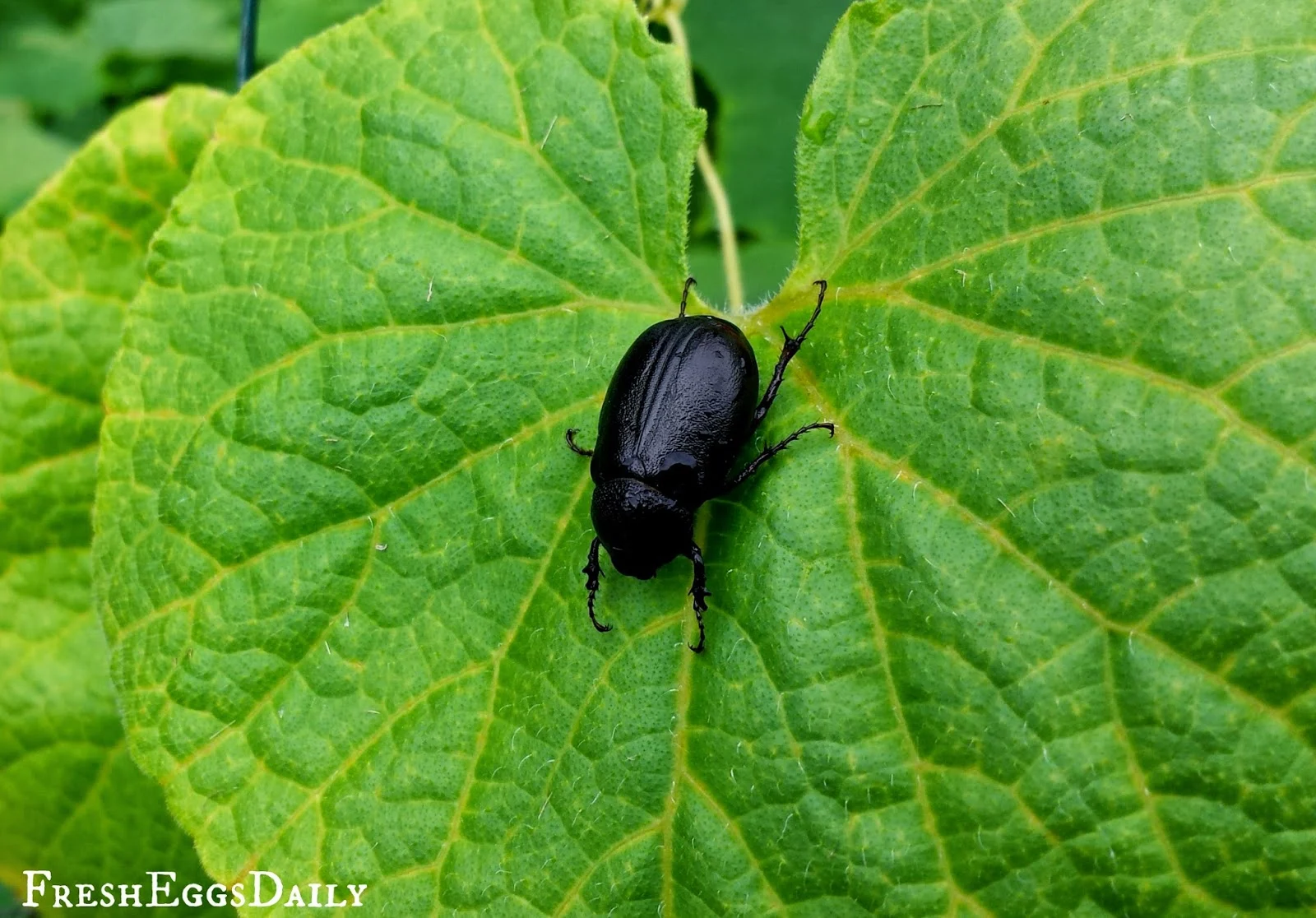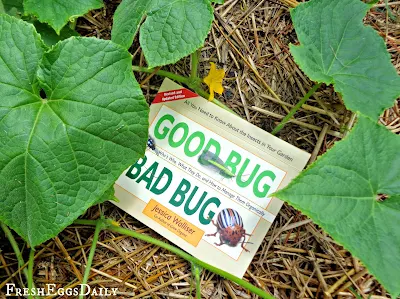Good Bugs vs. Bad Bugs | The Struggle between Good and Evil in the Garden
in
gardening,
Not all bugs are bad. Learn the difference between the good bugs and bad bugs and let the good guys wage war on the bad bugs in your garden.
The combination of warm sunny days, cool nights and plenty of rain has conspired to help our melon and squash garden flourish.
There are cheerful yellow blossoms everywhere and even the beginnings of some tiny fruit.
Good Bugs vs. Bad Bugs | The Struggle between Good and Evil in the Garden
Bees are buzzing around - which makes me so happy considering the plight of the honeybees and how beneficial they are in pollinating all of the beautiful blossoms.
Of course bad bugs have taken up residence as well, but hopefully the toads and bats along with some good bugs are controlling their numbers.
As with much in life, it's a constant struggle between good and evil, even inside the confines of garden fencing. Come take a look!
The Bad Guys
Stink Bugs are a pretty serious garden pest.
Fortunately, birds, toads, spiders, praying mantis and parasitic wasps all love to eat them!
(See below, though. There are some beneficial varieties of stink bugs that actually eat some of the bad bugs.)
Aphids love to munch on lupine as well as rose bushes and can quickly overtake a plant.
Spraying them with a dish soap/water mix and then hosing off the plant with plaint water can help control aphids.
Squash Bug eggs might be pretty, shiny coppery little orbs, but you don't want to see them on your squash plants.
They will hatch into little gray nymphs and then mature into destructive squash bugs, so destroy any you see.
Planting marigold or dill around your garden can help repel these bad bugs.
Cucumber Beetles are another menace to your garden.
They will munch on pretty much any squash or melons, so my garden is like a buffet for them.
This guy had to go, pretty as he may be.
Planting marigolds and catnip, as well as mulching the plants, can help deter the cucumber beetle.
Setting out a yellow dish or bucket full of soapy water away from your squash and cucumber plants can also work to draw the beetles away from the plants and into the water where they will drown.
Japanese Beetles are not welcome in the garden either. More treats for our chickens!
I always bring a mason jar with me to the garden and scoop any bad bugs I find into it. The Japanese beetles specifically seem to like our raspberries and rose bushes. Ugh! So I hand pick them off the bushes, or knock them off into the jar.
Then it's off to the chicken coop with the bugs along with any dropped blossoms and overripe or bug-eaten produce I find in the garden.
June Bugs are another type of garden pest that I don't like to see. They get picked off the vegetable plants and fed to the chickens also.
Cabbage Worms are another pest you don't want to see. They will chew holes in your kale, cabbage, turnip, radish, broccoli and cauliflower leaves.
The often hide on the underside of leaves, so sometimes your first sign of an infestation (besides the raggedy holes in the plant leaves) is tiny black spots on the leaves which is their poop.
Chickens and ducks will gladly eat these pests for you if you want to hand collect them, or you can try citrus oil sprays to repel the worms or sprinkle cornmeal around the plants, which will cause them to bloat and die.
Colorado Potato Beetles will happily also eat your tomatoes, peppers and eggplant, since they are also in the Solanaceae family, along with white potatoes.
The eggs are bright yellow and can be found on the underside of leaves, the larvae have bulbous bodies and black heads, and the adults have the telltale stripes.
These pests feast on leaves and will burrow into the soil and overwinter.
(A good reason to rotate crops!)
Grasshoppers are another garden menace, although they prefer to munch on grass, so I generally leave the grasshoppers I find in the garden.
Fortunately chickens love to eat crickets and grasshoppers.
The Good Guys
Toads are hugely beneficial to gardens.
They eat all sorts of insects, slugs and grubs.
Active mostly at night, if I am lucky enough to see any during the day around our property, I quickly rehome them to the garden where they will do the most good.
And yes, they do use the house I put out for them.
Bees are pollinators.
Without bees, all these blossoms would not yield fruit and vegetables.
There are lots of different types of bees. Of course there are the honey bees, but there are several types of native bees including mason bees, bumblebees, and metallic green sweat bees to name a few, and they are all welcome in our garden.
Spiders will eat your bad bugs for you.
Daddy Longlegs particularly enjoy dining on aphids, beetles, caterpillars and flies.
Other varieties of spiders will eat centipedes, earwigs, millipedes, mites, mosquitoes and moths as well.
Dragonflies will eat nearly any insect they can find, and while they do eat the beneficial bees and even other dragonflies, I still consider them the good guys since they eat mosquitoes, flies and other bad bugs.
Plus, they're so pretty flitting around at dusk, I was glad to see this beautiful blue one in the garden.
Anchor Stink Bugs are one variety of stink bug that is a predator insect and will eat other bad bugs, so don't squish this guy if you see him in your garden!
Praying Mantis are every gardener's friend, but like dragonflies, they will eat pretty much any insect they encounter, including butterflies, bees and each other.
But they do munch on aphids, squash bugs and all the other bad guys, so we love our praying mantis.
Ants may not be welcome in the kitchen, but they are beneficial to a garden.
They unintentionally pollinate flowers by crawling through the pollen as they search for food. They help to aerate the soil by digging tunnels. Ant also eat aphids, mealybugs and other bad bugs.
Ground Beetles are good guys.
They will eat potato beetles, corn ear worms, squash vine borers and slugs among other bad bugs.
This one is a welcome sight.
Birds, while they may nibble on your berries a bit, are on the good side.
Birds eat a huge amount of bugs and help greatly with insect control, so consider putting up some birdhouses around your garden.
Here's a list of a few types of birds and the kinds of insects they like to eat courtesy of Gardener's Supply Company.
- Bluebirds: grasshoppers, crickets, beetles, larvae, moths
- Cardinals: beetles, grasshoppers, leafhoppers, stinkbugs, snails
- Chickadees: aphids, whitefly, scale, caterpillars, ants, earwigs
- Grosbeaks: larvae, caterpillars, beetles
- Nuthatches: tree and shrub insects such as borers, caterpillars, ants and earwigs
- Oriole: caterpillars, larvae, beetles, grasshoppers
- Sparrows: beetles, caterpillars, cutworms
- Swallows: moths, beetles, grasshoppers
- Titmice: aphids, leafhoppers, caterpillars, beetles
- Warblers: caterpillars, aphids, whitefly
- Woodpeckers: larvae, beetles, weevils, borers
So there you have it.
The battle between good and evil garden-style.
Although there are far more bad bugs than good, so far good seems to be triumphing over evil and our garden is doing just fine without the use of any pesticides or insecticides.
It's such a wonderful feeling to grow our own organic produce for our family and chickens - because of course we'll be sharing with them!
Organic gardening at its best!
To keep track of the various bugs I'm seeing, I've been referring to this wonderful reference book Good Bug, Bad Bug by Jessica Walliser (St. Lynn's Press, 2008) to try and figure out which bugs can stay and which need to be fed to the chickens.
It's a wonderful resource with full color photos of dozens of bugs you may encounter in your garden.
It's a wonderful resource with full color photos of dozens of bugs you may encounter in your garden.
There's a wonderful graphic and more information on natural pest control HERE.
If you missed Part I, how we tilled and planted our garden, click HERE.
If you missed Part I, how we tilled and planted our garden, click HERE.
For the final part of my garden series, The Harvest, click HERE.
Pin This!










